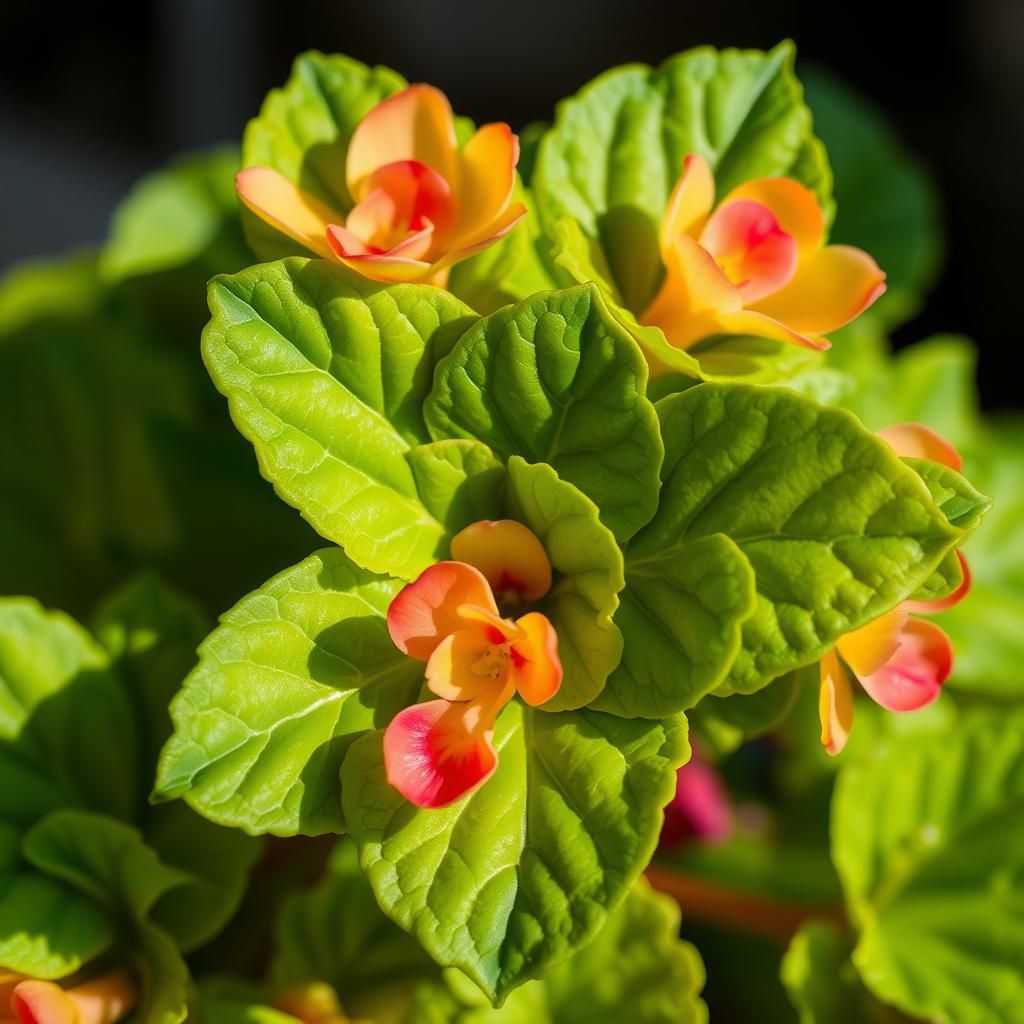Do Begonias Need Full Sun? Discover the Best Light Conditions for Your Begonias

When it comes to growing begonias, understanding their light requirements is essential for fostering healthy, vibrant plants. The question of whether begonias need full sun often arises among gardening enthusiasts. While these stunning flowering plants can thrive in various light conditions, the right amount of sunlight significantly impacts their growth and blooming potential. In this article, we'll explore the best light conditions for begonias, helping you provide the optimal environment for your plants. Whether you’re a seasoned gardener or a beginner, knowing how to manage light exposure can lead to a thriving begonia collection that flourishes beautifully.
Do Begonias Need Full Sun?
Begonias are known for their vibrant colors and lush foliage, but full sun is not necessarily what they require to thrive. Most begonias prefer partial shade or filtered sunlight, as direct exposure to strong sunlight can scorch their leaves and affect their growth negatively. These plants do well in environments where they receive bright, indirect light for several hours each day, which allows them to flourish without the risk of sunburn. Therefore, while some begonias can tolerate some amount of full sun, they generally perform best under conditions that protect them from the harshness of direct sunlight.
Understanding Begonia Light Requirements
Begonias have diverse species, and their light requirements can vary significantly. Generally, most begonias thrive in conditions that provide bright, indirect light. This means that while they can tolerate some sun, extended exposure to direct rays can damage their foliage, leading to wilting or browning of the leaves. It's critical to ensure they are placed in a location that offers a balance of light and shade.
Signs of Too Much Sunlight
When begonias receive too much sunlight, you may notice several telltale signs indicating stress. The leaves may start to develop brown spots, edges may turn crispy, and overall, the plant might appear stunted in its growth. If you observe these symptoms, it’s essential to consider relocating your begonia to a more suitable environment with less direct exposure to sunlight.
Beneficial Conditions for Growing Begonias
To promote healthy growth, begonias thrive best in a humid environment with consistent moisture. While they dislike soggy soil, maintaining a balanced watering schedule combined with appropriate light conditions fosters a healthy plant. Ensuring they are not situated in full sun allows their leaves to remain vibrant, and the overall health of the plant improves.
Best Locations for Begonias
When selecting a location for begonias, consider placing them indoors near east or north-facing windows where they can receive indirect sunlight throughout the day. Alternatively, in outdoor settings, look for areas that offer full shade in the afternoon, as this is when the sun's intensity is at its peak, which protects them from excessive sunlight exposure.
Adjusting Light Conditions Seasonally
As seasons change, so can the amount of available light. During the summer months, the sun's position may provide more intense light than in winter. It's important to monitor and adjust the begonias' placement accordingly—perhaps moving them to a shadier spot or providing some form of shade to protect them during harsh weather conditions.
See also:
| Condition | Recommended Light | Potential Issues |
|---|---|---|
| Low Light | Indirect or filtered light | Stunted growth |
| Medium Light | Bright, indirect light | Optimal growth |
| High Light | Direct morning sun | Leaf burn, wilting |
What happens if begonias get too much sun?

When begonias receive too much sun, they can experience various issues that affect their overall health and appearance. While begonias appreciate bright but indirect light, excessive exposure to direct sunlight can lead to several detrimental effects.
1. Leaf Burning
Exposure to intense sunlight can cause the leaves of begonias to develop burn spots. These spots often appear as brown or crispy patches on the leaf surface, severely affecting the plant's aesthetic appeal.
Symptoms of Leaf Damage
The symptoms of leaf burning in begonias may include:
- Brown or crispy edges on the leaves
- Faded or bleached leaf color
- Wilting or drooping leaves due to moisture loss
2. Reduced Growth
When begonias are subjected to excessive sunlight, their growth rate may decline. The plant’s energy reserves become depleted as it struggles to cope with the stress of intense light exposure.
Effects on Growth Rate
The effects on growth can manifest in various ways:
- Stunted growth and smaller foliage
- Delayed blooming or fewer flowers
- Weak and leggy stems as the plant stretches for light
3. Water Stress
High levels of sunlight can lead to increased water evaporation from the soil and from the leaves through transpiration. This makes it essential to monitor the moisture levels closely.

Understanding Water Requirements
Factors to consider regarding water stress include:
- Need for more frequent watering in hot conditions
- Drooping leaves as a sign of underwatering
- Overwatering risks due to confused moisture signals
4. Pest Infestation
Stressed plants, like those suffering from too much sunlight, may become more prone to pest problems. Pests such as aphids or spider mites are often attracted to weakened plants.
Identifying Pest Problems
Signs that your begonia may have pest issues include:
- Visible insects on the leaves or stems
- Sticky residue on the leaves (honeydew from aphids)
- Webbing on the underside of leaves (indicative of spider mites)
5. Color Fading
Excessive sunlight can lead to the fading of the begonia's vibrant colors, making them appear dull and lifeless. While some sunlight is beneficial for photosynthesis, too much can negatively affect pigmentation.
Impact on Leaf Color
The effects of fading color can include:
- Lackluster foliage that no longer shows vibrant hues
- Yellowing leaves as chlorophyll production decreases
- Reduced overall vibrancy in flowering
Questions from Our Readers
Do begonias need full sun?
Begonias do not need full sun; they generally prefer indirect light or partial shade. Direct sunlight can scorch their leaves, leading to damage and stunted growth. For optimal health, place begonias in a location where they can receive filtered sunlight or light shade.
What is the best light condition for begonias?
The best light condition for begonias is bright, indirect light. They thrive in conditions where they can absorb light without being exposed to harsh sunlight. This helps ensure the leaves remain healthy and vibrant while promoting proper flower development.
See also:
How often should begonias be watered?
Begonias should be watered when the top inch of soil feels dry. It is important to ensure that they are not overwatered, as this can lead to root rot. Maintaining a balance of moisture is key to keeping these plants healthy and thriving.
Can begonias tolerate low light conditions?
Yes, begonias can tolerate low light conditions, but their growth may be slower, and they may not produce flowers as abundantly. While they can survive in these conditions, providing them with adequate light is crucial for their overall health and vibrancy.

If you want to read more articles like Do Begonias Need Full Sun? Discover the Best Light Conditions for Your Begonias, we recommend you check out our Plants category.
Leave a Reply
Related Articles